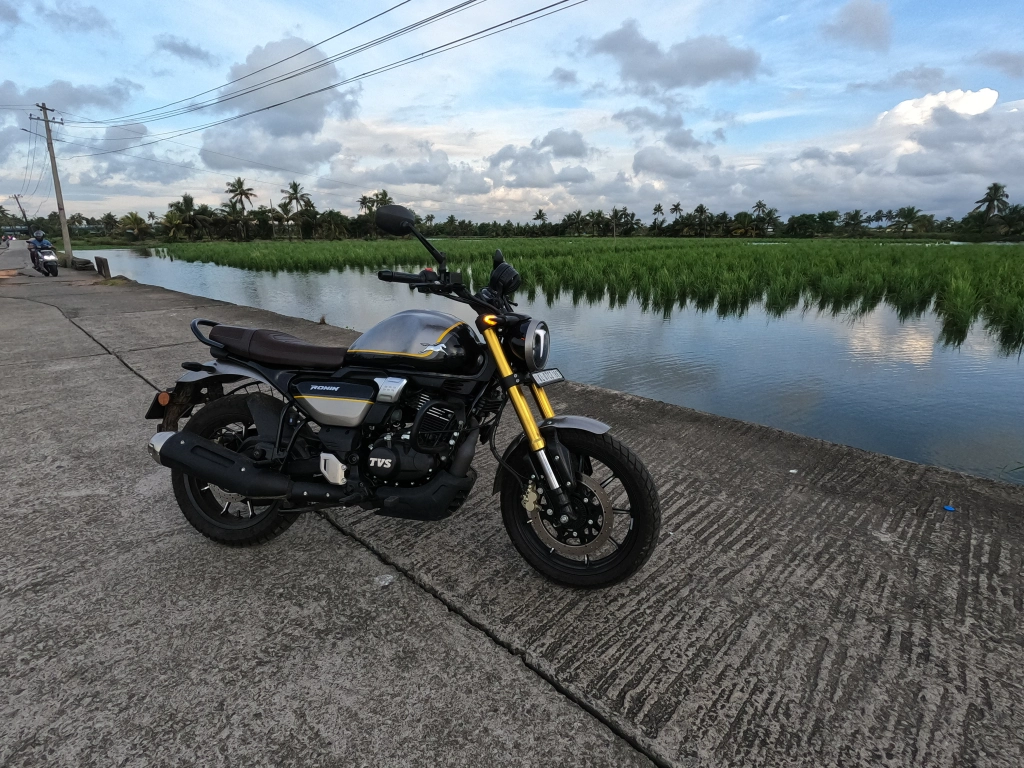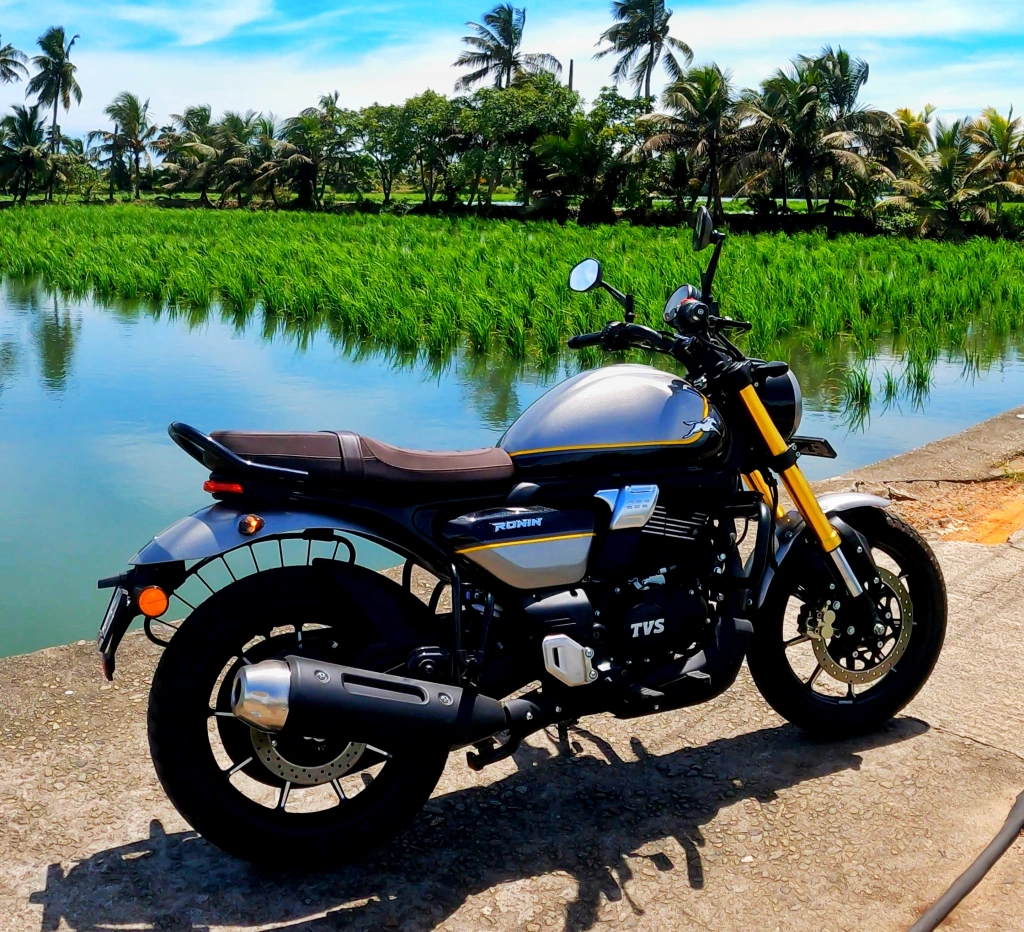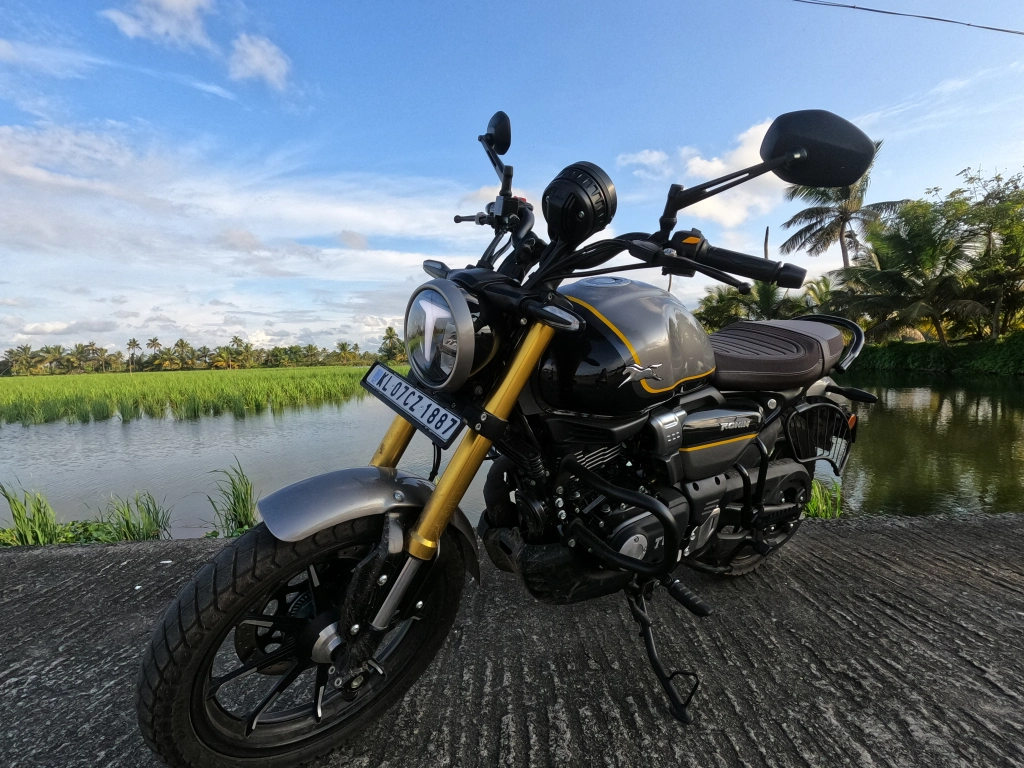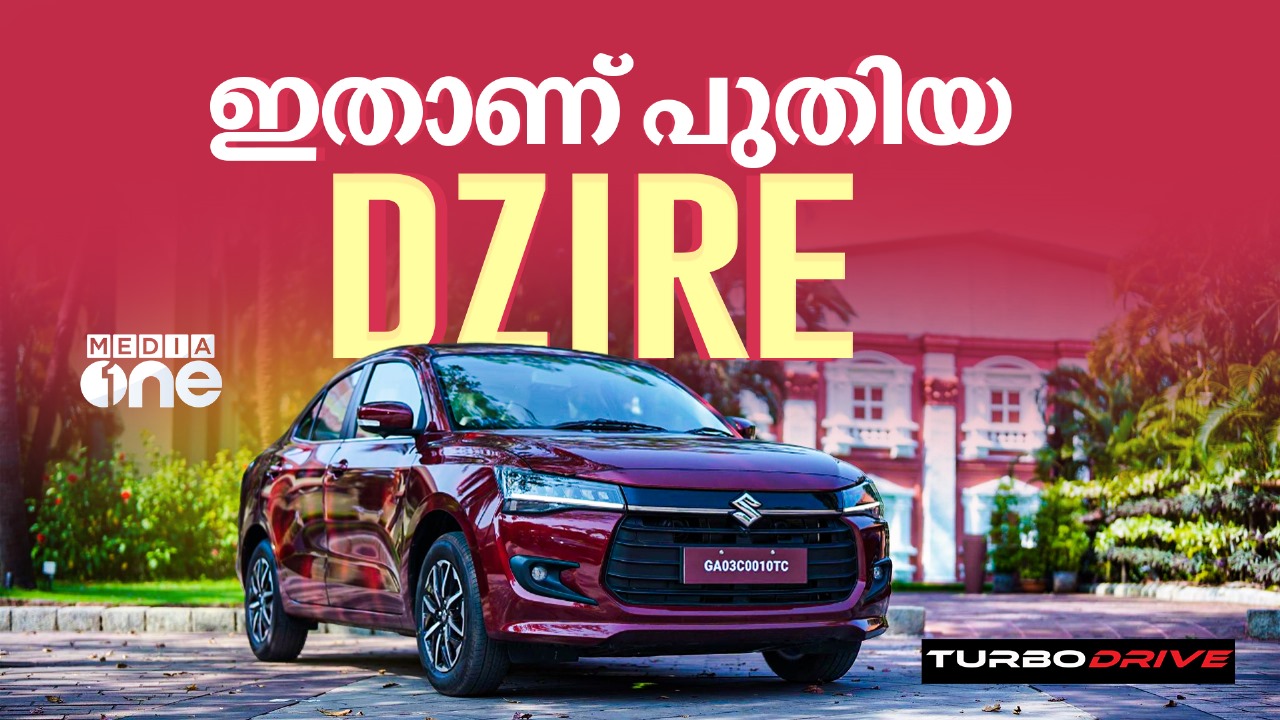
The Ronin draws its heritage back to the Zeppelin cruiser concept that was shown at the Auto Expo four years ago, but this bike has clearly taken a rather different direction when it comes to the design philosophy. You’ll see various sorts of motorcycles from different angles. There are hints of neo-retro machines, cafe racers, flat trackers and scramblers in there, but the strongest design theme seems to be that of a cruiser.
The most obvious cruiser cue is visible in the raked-out angle of the front USD fork, but TVS has thrown in a few more details. The chain drive, for example, gets an oversized cover that is designed to look like the belt drive system on a large cruiser. And then there’s the tall, swept-back handlebar, along with an alloy wheel design that looks inspired by what you’ll see on some big Harleys.
TVS Ronin: design

The Ronin draws its heritage back to the Zeppelin cruiser concept that was shown at the Auto Expo four years ago, but this bike has clearly taken a rather different direction when it comes to the design philosophy. You’ll see various sorts of motorcycles from different angles. There are hints of neo-retro machines, cafe racers, flat trackers and scramblers in there, but the strongest design theme seems to be that of a cruiser.
The most obvious cruiser cue is visible in the raked-out angle of the front USD fork, but TVS has thrown in a few more details. The chain drive, for example, gets an oversized cover that is designed to look like the belt drive system on a large cruiser. And then there’s the tall, swept-back handlebar, along with an alloy wheel design that looks inspired by what you’ll see on some big Harleys.
The overall result is a motorcycle that has a good presence up front, thanks to the USD fork and chunky 14-litre fuel tank, although the rear section is definitely more polarising. The fender looks a little awkward and the grab handle seems quite utilitarian as well, but it is removable if you don’t mind living without it.
What I do like is the sleek, almost Robocop-style LED tail-lamp that neatly integrates into the metal rail which forms the rear subframe. The smart-looking mirrors and arrow-shaped LED indicators also give the bike a nice premium feel for this price point. In fact, the overall quality and finish are probably the best that you will find for this kind of money
TVS Ronin: features and price

Good suspension comfort is something you would absolutely expect from a TVS and the same goes for features.
The Ducati Scrambler inspired offset instrument console displays plenty of information, but it’s also quite clear and easy to read. The slip and assist clutch has a light action, and the bike comes with hazard lights as well as a side-stand-down engine-kill feature.
The Ronin also has two riding modes, although they only affect the sensitivity of the ABS. Speaking of, you get single-channel ABS on the lower and middle variants, but shifting to the top spec variant brings in a dual-channel set-up, as well as adjustable levers and plenty of connected features via a dedicated TVS app.
At Rs 1.49 lakh (ex-showroom), the Ronin’s starting price is really quite tempting. However, the base SS variant only comes in two solid colours, and if you want the nicer looking dual-tone colour scheme or the gold coloured USD fork, the mid level TD model will cost you Rs 8,000 more. If you decide to go for the top-spec TD model, be prepared to pay nearly Rs 20,000 over the base model.
At this point, the Ronin is positioned around many 250cc options in the market, and while it is down on outright performance, it certainly outdoes all of them in terms of features.
TVS Ronin: comfort, chassis and handling

With that kind of performance, the Ronin is going to be a really nice bike to ride in the city and the brand-new chassis has been carefully designed to amplify a planted, but light and easy riding character.
Take the lazy 27-degree rake angle of the suspension fork, for example. This is quite cruiser-like and brings in a lot of stability, but at the expense of agility. To work around that, TVS has designed a fork offset at the bottom, which is something you normally see on dirt bikes. However, where the fork offset on a dirt bike moves the wheel forward to increase the trail, TVS has gone the other way around here and brought the wheel back in. That helps to reintroduce some agility and make for a light and easy bike to ride. Chassis tuning really can be an incredibly detailed art.
The standout factor of the Ronin’s new split double cradle chassis is undoubtedly its USD fork set-up. This is the same 41mm Showa fork from the RR 310, but with completely revised spring and damping rates to match the Ronin’s comfortable character. There’s a monoshock at the back and overall suspension travel figures are similar to the RR 310.
Now, we got to ride the bike for only a few hours in South Goa, on a day when the IMD announced an orange alert. Suffice to say, we did not get to push the bike to its limit, but the impression so far is highly positive. At 160 kilos, this is not a heavy motorcycle, but TVS has found the sweet spot between stability and light steering agility. You need very little effort to change direction and the new TVS Rambler tyres worked quite well, despite their blocky off-road design.
With those sort of tyres and 181mm of ground clearance, the Ronin does appear to be designed for some off-road riding. However, you’ll soon discover that the standing position is awkward, the rear ABS can’t be turned off, and that the suspension can bottom out quite easily if you start doing silly things. The Ronin clearly isn’t an off-roader, not even to the level of a mildly capable Scrambler. But it is really comfortable on the road. The riding position is completely upright and neutral, with a natural feeling reach down to the handlebar, and the foot pegs are placed comfortably beneath you as well. While we mostly encountered very nice roads in South Goa, the suspension set-up also feels like it will be gentle on your back over poor surfaces; the seat is nicely padded too



